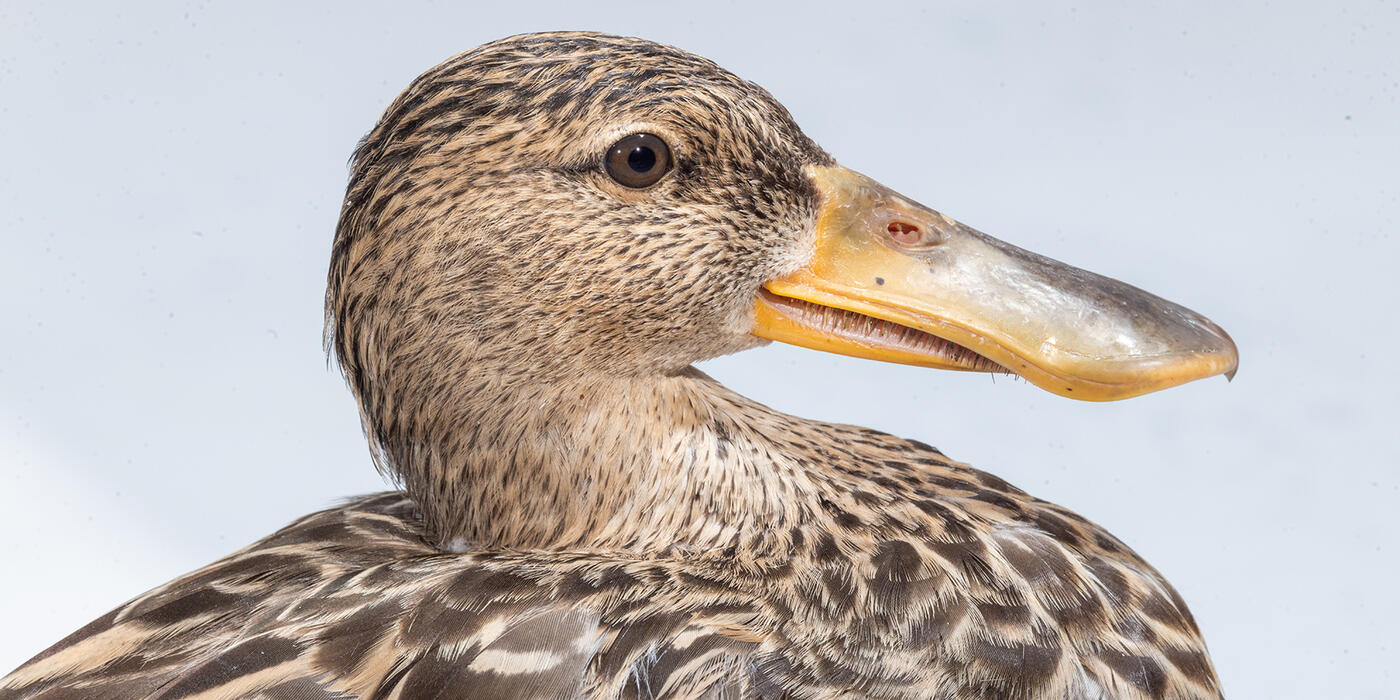How Do Birds Handle the Heat?
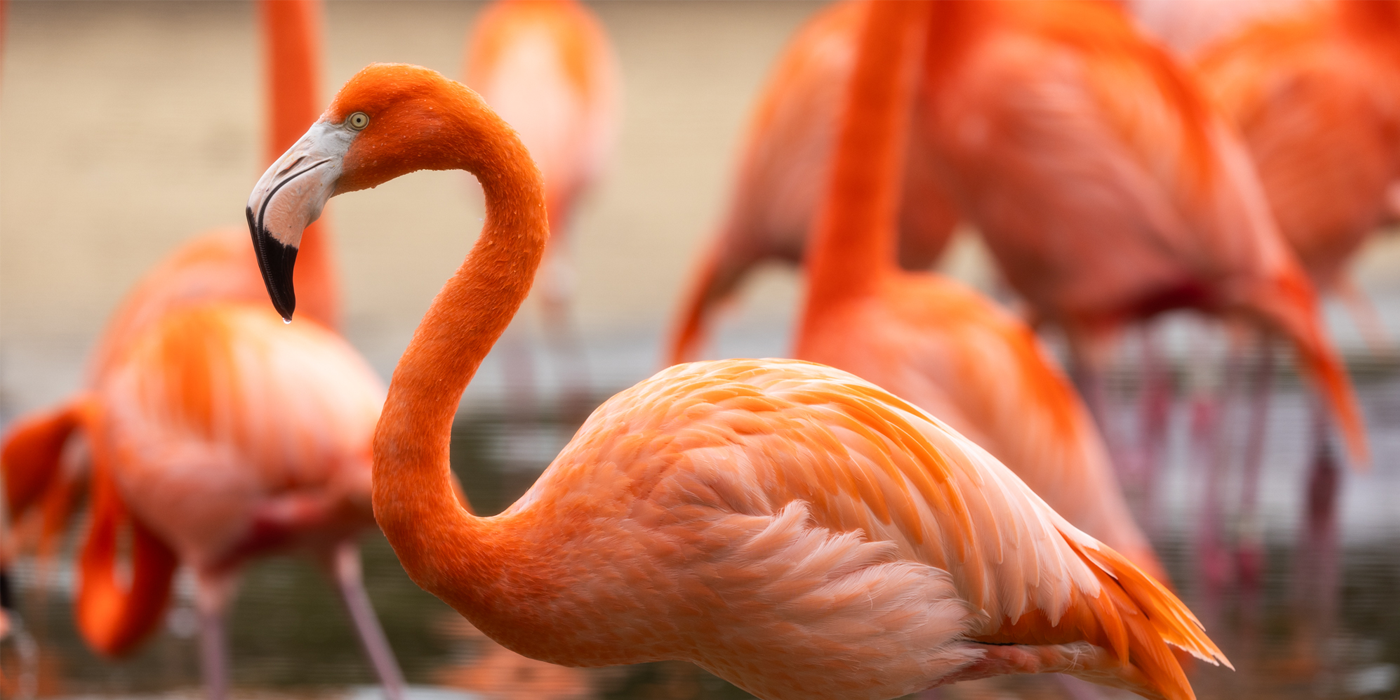
Imagine it’s hot, and you’re trying to stay cool. Now imagine beating the heat without an ice-cold pitcher of lemonade, or air conditioning…or even the ability to sweat?
Welcome to the life of a bird.
It seems impossible to humans, but for birds, it’s part of the job. From scorching deserts to freezing oceans, birds have developed incredible methods for regulating their body temperatures. Some species modify their behavior when extreme weather hits. Others take advantage of unique natural adaptations. (After all, plenty of avian species can trace their evolutionary history to eras when global temperature averages were much higher. So maybe all that dinosaur blood coursing through their veins is helping?)
Take a look at some of the amazing methods birds use to handle the heat:
Anatomical Adaptations
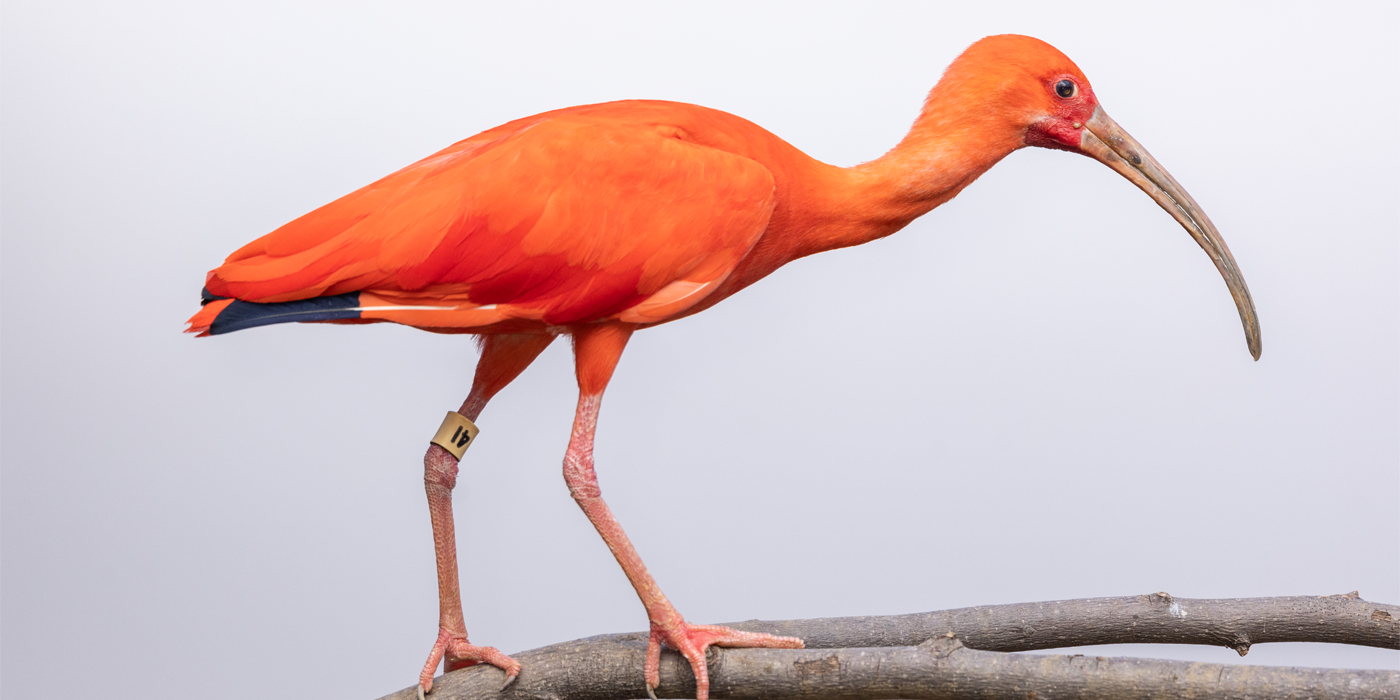
Wading birds, such as flamingos and ibises, have long, thin, featherless legs that make it easy to release heat from their bodies. When the blood circulates up and down their legs, heat dissipates through their skin. This natural method of thermoregulation gets a boost when the birds’ feet are submerged in cool water. (It even works in reverse! Watch how flamingos at the Smithsonian’s National Zoo use hot water to stay warm in winter.)
Take a Dip
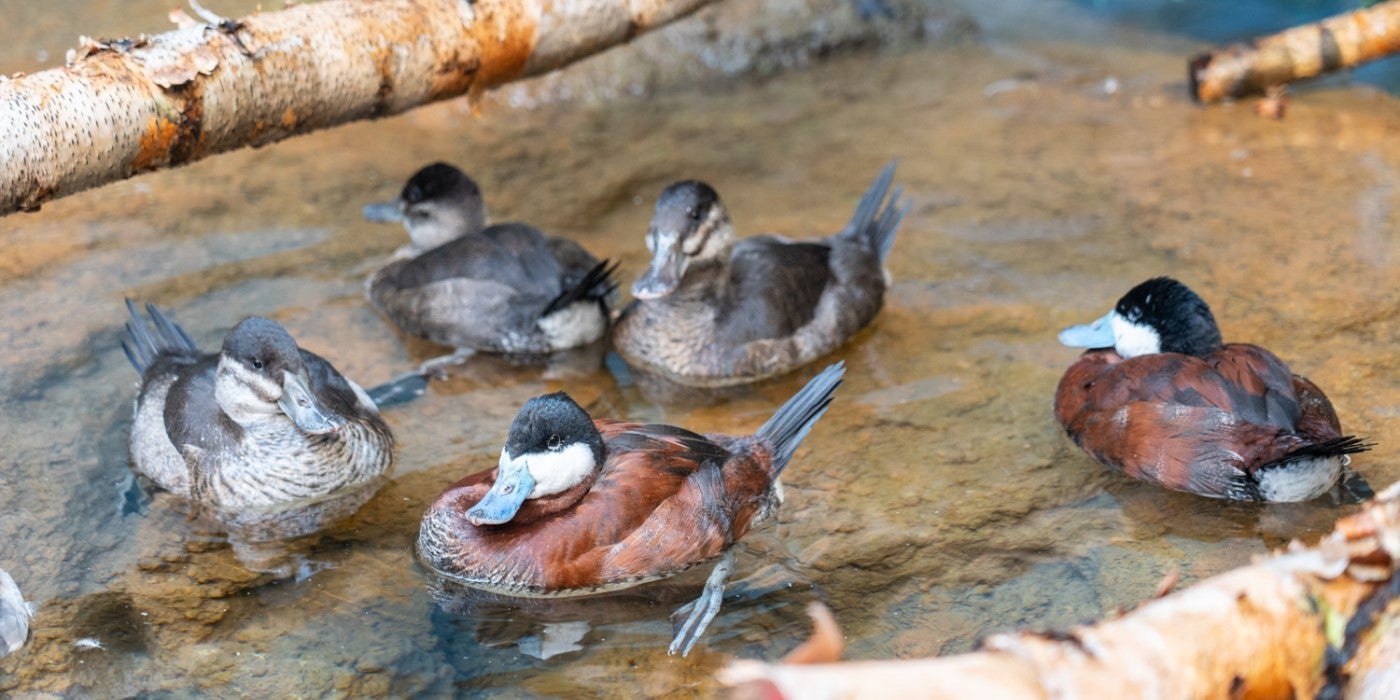
Did you know? Birds, like mammals, are warm-blooded. This means they create heat from their bodies instead of relying on their surroundings. In fact, some of the wild birds in your backyard, including robins and blue jays, generate so much internal heat that their normal body temperatures run as hot as 109 degrees Fahrenheit, or 42 degrees Celsius!
Fortunately, birds have some reliable ways to avoid overheating. One of the best methods for birds to cool off is through a quick soak. Having moist feathers allows heat to dissipate quickly from their bodies. Fountains, birdbaths and other water spots can become cooling oases for backyard birds when the heat gets too extreme.
Sleep It Off
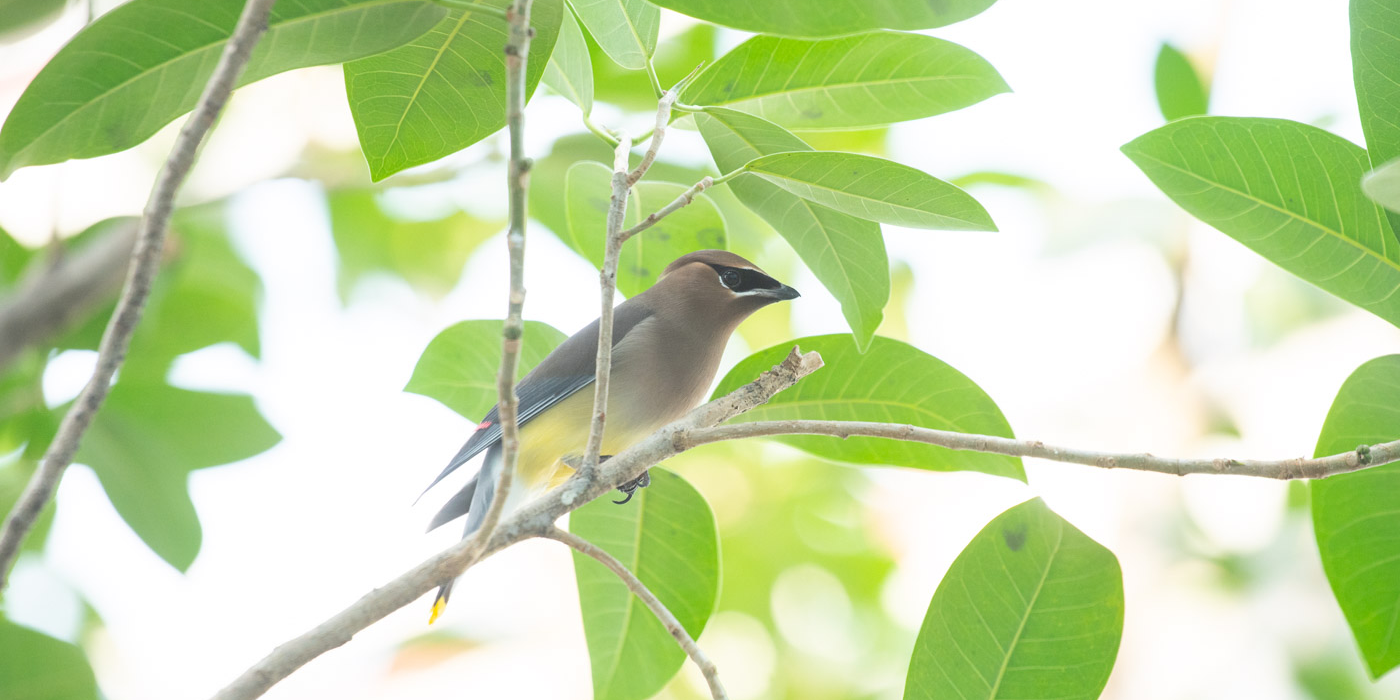
Birds can also avoid sweltering temperatures by incorporating siestas into their summer routine. During the hottest months of the year, many birds limit their exposure to heat by becoming active in cooler parts of the day and taking “power naps” when the sun is at its strongest.
A Uh, 'Natural' Solution
When body surfaces are wet, the resulting evaporation of that moisture causes the surfaces to cool. Scientists call this “evaporative cooling.”
Some long-legged birds, including storks and herons, have an unusual method for harnessing this power: pooping on their own legs. This fecal phenomenon, known as urohidrosis, lowers the birds’ body temperature as the moisture within the poop evaporates off their skin.
Smelly? Yes. Effective? Also yes.
Release the Heat
Just like your dog after an exciting chase with a tennis ball, many birds release heat energy by panting. This method of avian perspiration vents heat energy and moisture through the birds’ open mouths.
Some birds take this approach a few steps further. Certain species—cormorants, pelicans, owls and ravens, to name a few—can release heat by quickly fluttering their neck muscles, vibrating energy off their bodies and opening up their skin to cooler air. What’s more, recent research indicates some species of birds are developing bigger bills to enable more rapid heat loss in the wake of rising global temperatures. (You might say this adaptation keeps them fit enough to maintain ‘beak’ performance!)
Soak Up the Sun
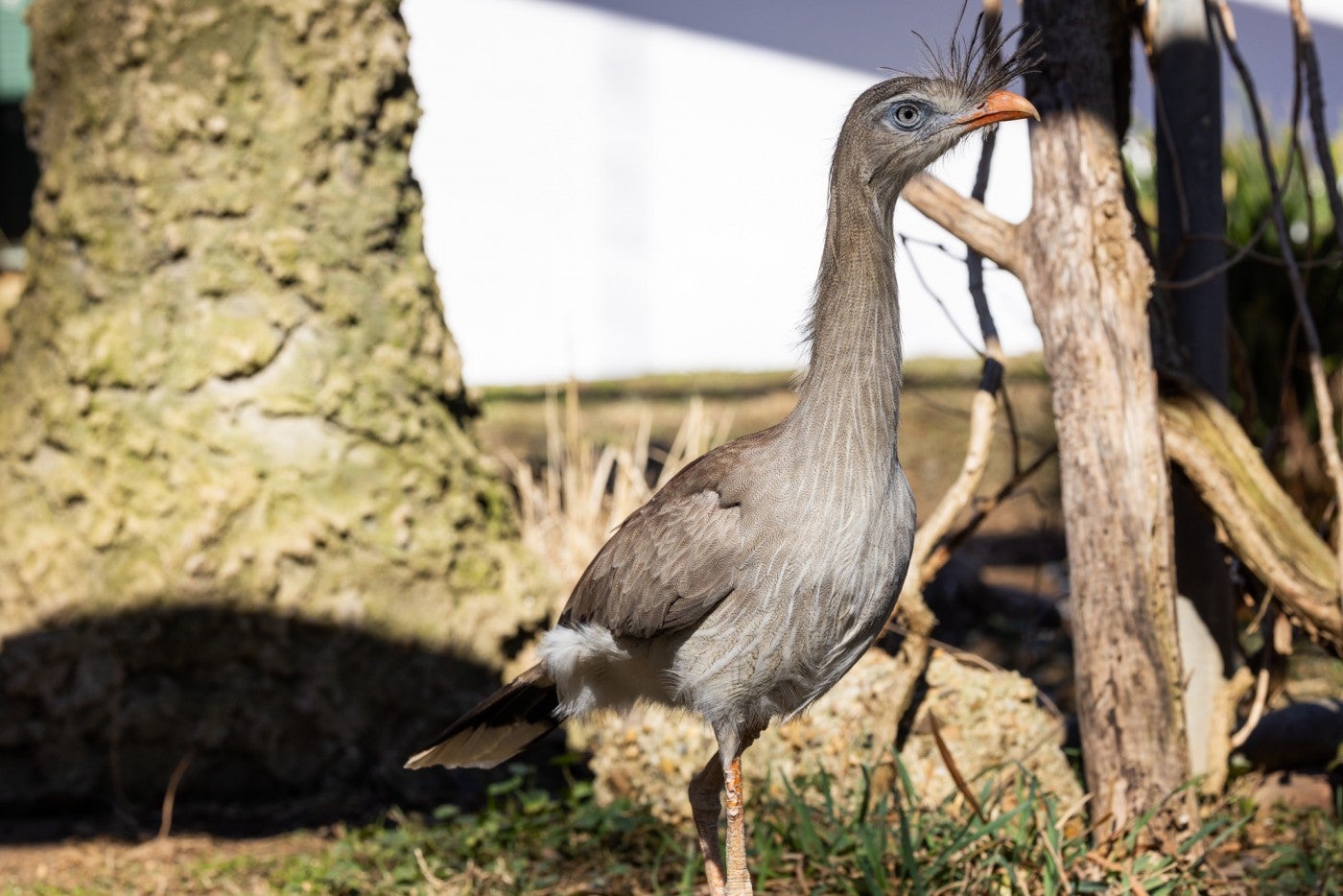
Grassland birds like seriemas and bustards don’t just beat the heat, they use it. Spreading their wings and basking in the sun gets their feathers extremely hot—sometimes reaching up to 160 degrees Fahrenheit (71 degrees Celsius). When red-legged seriemas sunbathe, they flop belly-up on the ground. With their wings spread out and their mouths hanging open, they look like they’re dead…but they’re not! This method works as a natural pest control for killing mites and other skin pests, keeping their feathers clean, healthy and functional.
A Helping Hand
From wild species in your neighborhood to those that live in the Smithsonian’s National Zoo and Conservation Biology Institute in Washington, D.C., many birds count on a little help from humans to boost their own natural cooling abilities. Have a backyard? Providing a clean water source, like a well-maintained fountain or birdbath, can help transform your own yard into a safe haven for birds year-round.
Keepers at the Zoo’s Bird House use a variety of approaches to help birds feel comfortable and at home during the hottest months of the year. Misters, fresh water, pools, cool sheds, and ice treats are just a few of the things birds at the Zoo can count on to weather the infamously swampy Washington summers!
Want more bird facts? Check out our articles on the Zoo's flamingos and see how enrichment can help migratory songbirds and shorebirds feel at home in a Zoo habitat.
Related Species:
